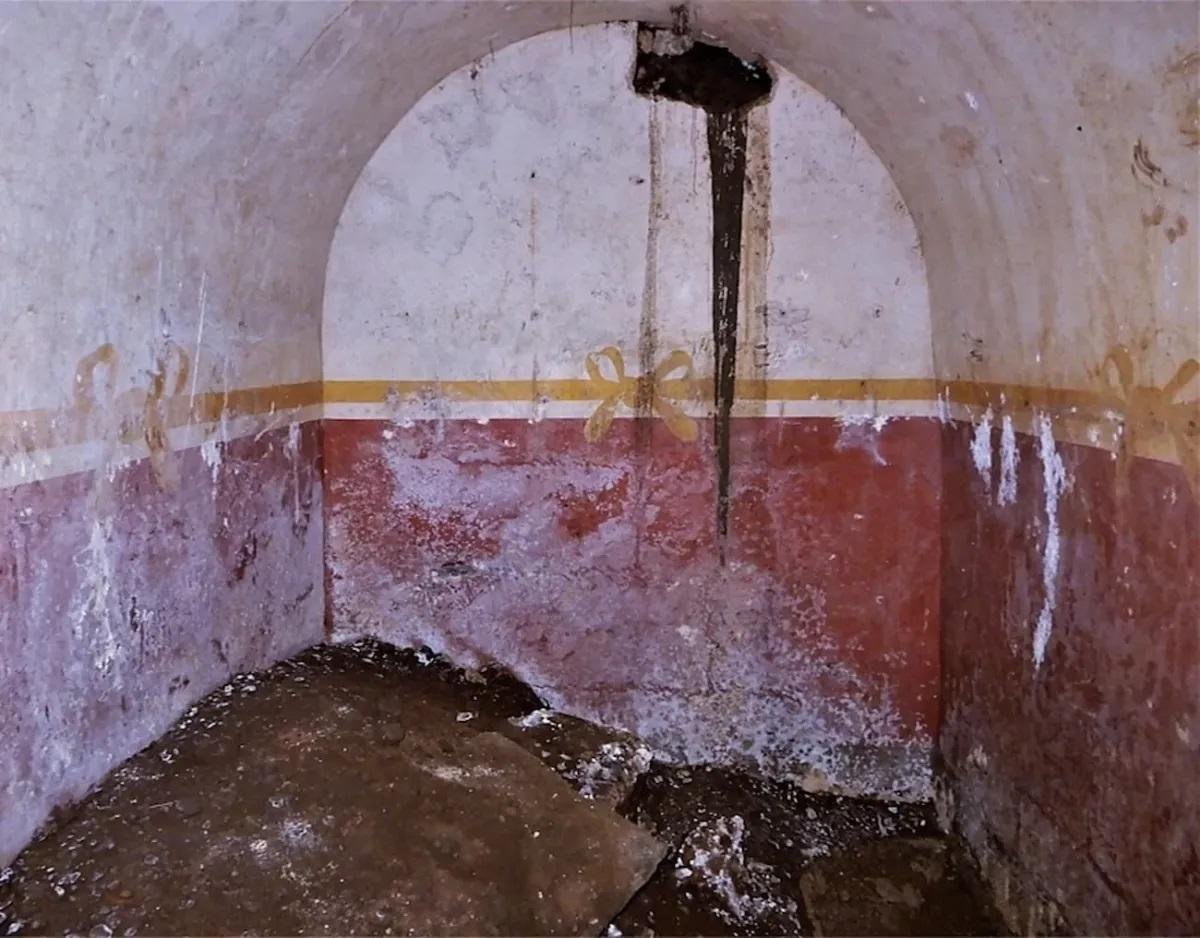Archaeologists have unearthed a high-status Macedonian tomb in the ancient city of Aegae, known today as Vergina, located in Imathia, Central Macedonia.
 Interior of the Macedonian tomb discovered at Aegae. Credit: Angeliki Kottaridi
Interior of the Macedonian tomb discovered at Aegae. Credit: Angeliki Kottaridi
The discovery was announced by Angeliki Kottaridi, Honorary Superintendent of Antiquities, during the 36th Annual Archaeological Meeting for “the Archaeological Project in Macedonia and Thrace in 2023”.
The tomb was uncovered during construction work for a sewage network, revealing an entranceway enclosed by stones. Measuring 3.7 x 2.7 meters, the tomb’s interior is adorned with a distinctive golden band featuring bows, marking it as a site of high status.
Dating back to the 3rd century BCE, the tomb is situated near a similar tomb excavated in 1969. Inside, archaeologists found the burial of a man alongside a shield reinforced with iron parts and various weapons. The tomb’s architectural features and the quality of the weapons imply the man held a prominent position, possibly a nobleman or a member of the Macedonian elite cavalry, as speculated by Kottaridis.
Also buried within the tomb was a woman, likely the man’s wife, accompanied by jewelry such as beads, necklaces, and a golden myrtle wreath, symbolizing their affluent status.
This discovery adds to the body of evidence showcasing Aegae’s significance as the original capital of Macedonia, serving as the burial place for royalty even after the capital shifted to Pella in the 4th century BCE. Notably, Aegae is infamous as the site where King Philip II of Macedon, the father of Alexander the Great, was ᴀssᴀssinated by one of his bodyguards.
Angeliki Kottaridi said: “This part of the necropolis was reserved for high-status Macedonians, evidenced by several previous tomb discoveries containing rich funerary objects.”
Alongside the tomb, other significant findings were presented, including a part of the city wall delineating Aegae’s boundaries. Kottaridi said: “The wall is slightly over two meters wide, which means six Macedonian feet. The old wall from the 5th century, dating back to the years of Perdiccas II, is approximately one meter wide.”
She also mentioned the burial of a warrior who doesn’t have a helmet but has a nice sword, which he holds with his right hand; his rings have fallen off, and there is also the buckle that held his cloak.
As research continues, scholars are eager to unravel the idenтιтies of the tomb’s occupants.





